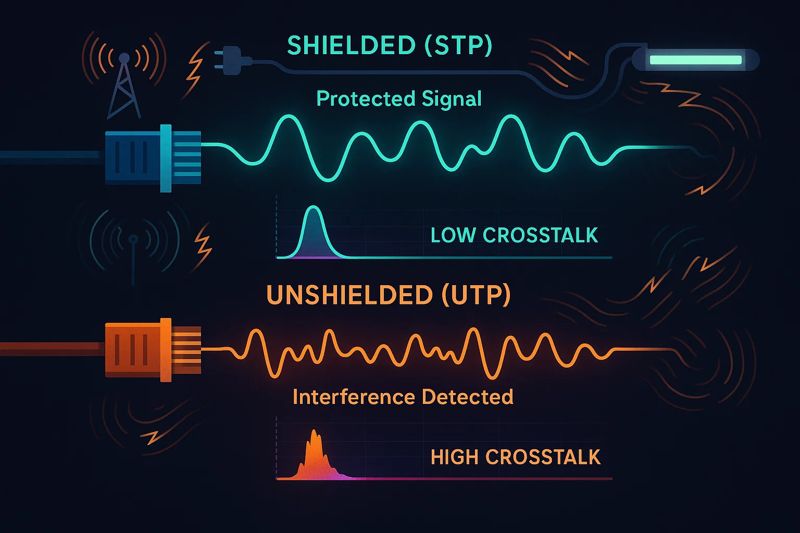Cable & Wire | High quality and excellent service at reasonable prices.
info@zion-communication.com
Author: Will Publish Time: 08-08-2025 Origin: Site
A crucial decision you will need to make when designing or upgrading your network is the choice to use shielded (STP) or unshielded (UTP) connectors. This factor can influence signal quality, installation costs, and equipment performance in different environmental conditions.
In this article, we will examine the advantages and drawbacks of shielded versus unshielded connectors for Ethernet installations, helping you make the best choice for your specific needs.
These connectors feature a metal protective shield or foil covering the connection area. They are designed to work with shielded Ethernet cables that protect against electromagnetic interference (EMI) and radio frequency interference (RFI).
These connectors lack additional protective shielding. They are lightweight, cost-effective, and designed for use with unshielded Ethernet cables in low-interference environments.

Superior EMI/RFI Protection - Ideal for industrial zones, data centers, or locations near electrical equipment
Improved Signal Integrity - Reduces crosstalk and external interference, especially in high-speed Cat6A and Cat7 networks
Enhanced Network Reliability - Lower error rates and better performance over long distances
Higher Cost - Both the connectors and compatible cables are more expensive
More Complex Installation - Requires proper grounding to maintain effectiveness
Larger Size - May present challenges in tight installation spaces
Lower Cost - More affordable and readily available
Easier Installation - No grounding required; faster terminations
Greater Flexibility - Smaller form factor works better in confined spaces
Limited EMI Protection - Not suitable for electrically noisy environments
Potential for Crosstalk - Not optimal for high-speed networks in challenging conditions
Industrial facilities with heavy machinery
Data centers with high-speed network requirements
Locations near radio towers, power lines, or fluorescent lighting
Outdoor installations or long cable runs where EMI is a concern
Home or office networks with minimal interference
Short cable runs away from electrical equipment
Budget-conscious projects with low EMI risk
Installations requiring quick deployment in tight spaces
The choice between shielded and unshielded connectors depends on your specific environment, performance requirements, and budget constraints.
For high-speed networks operating in interference-prone areas, shielded connectors offer superior reliability and signal integrity.
For standard office or home networks, unshielded connectors provide a cost-effective and easy-to-install solution that meets most typical requirements.
Contact us for more information

Will is the Copper Cabling Product Manager at Zion Communication,
specializing in the development and marketing of Ethernet cabling solutions.
With extensive industry experience, he is dedicated to delivering high-performance
and reliable cabling products to OEM/ODM clients worldwide.
will@zion-communication.com
+86 -18268007201
